
home I index I latest I glossary I introductions I e-mail I about this site
St Andrew, Rockland All Saints
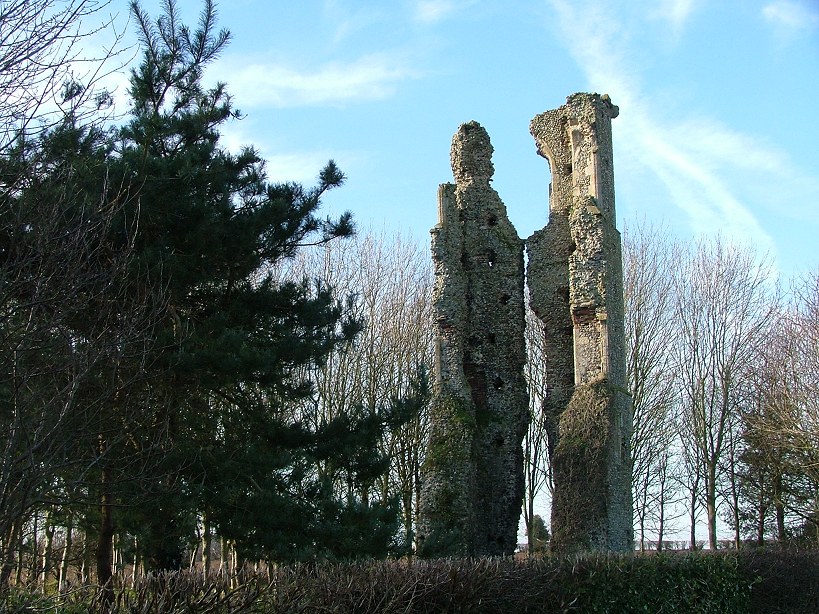
Read
the captions by hovering over the images, and click on them to
see them enlarged.
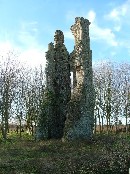
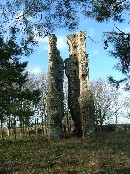
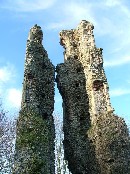
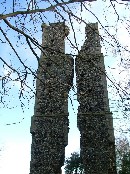
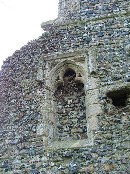
| St
Andrew, Rockland All Saints What survives is basically the west wall of the tower, split completely down the middle. The corners are solid, and you also get about half of each of the north and south faces of the tower as well. They present something of a puzzle, because if the position of the bell windows is anything to go by, this tower was not square but slightly rectangular, longer from east to west than from north to south. It rather looks as if the demise of the church was caused by the collapse of the eastern face of the tower into the nave, perhaps serving as a reminder that a square tower would have been stronger. Although this prominent ruin is easy to see, it is rather harder to approach. The area around it is cordoned off with fairly recent barbed wire and planted with young trees. It is certainly possible to get in (although, as this would be trespassing, I cannot suggest you do such a thing) but rather harder to get out, as you have to climb down a slope as you get over the barbed wire. It is easy to see how St Andrew could have fallen into disuse. We are only a few hundred metres from the church of Rockland All Saints here, and there are almost no other buildings within a mile. After the Reformation there must have been increasingly less reason for two churches so close together in such a remote place. Some churches quietly crumble over the centuries; Kempstone is a perfect example. Others are well used and much loved, but one traumatic incident kills them quickly; think of Norwich St Paul, a busy medieval parish church in 1942, a footnote under the Norwich bypass little more than twenty years later. For most, however, a fall into disuse is soon followed by a fall of a more violent and destructive kind, and that seems to be what has happened here. Simon Knott, January 2006 |
Amazon commission helps cover the running costs of this site.
home I index I latest I introductions I e-mail I about this site I glossary
links I small
print I www.simonknott.co.uk I www.suffolkchurches.co.uk
ruined churches I desktop backgrounds I round tower churches